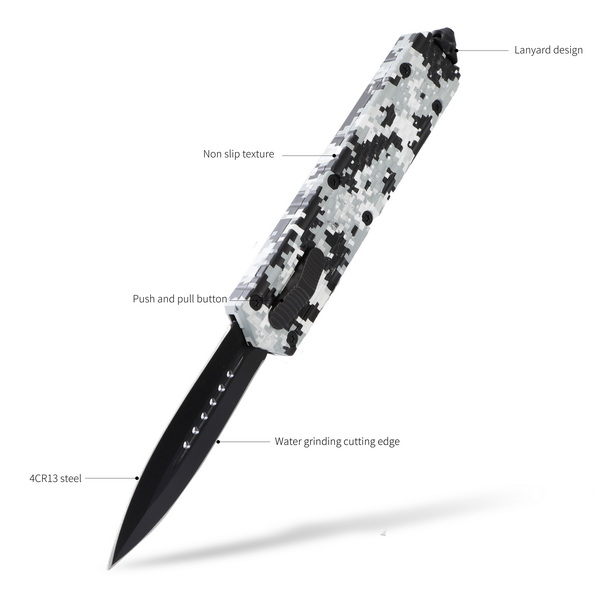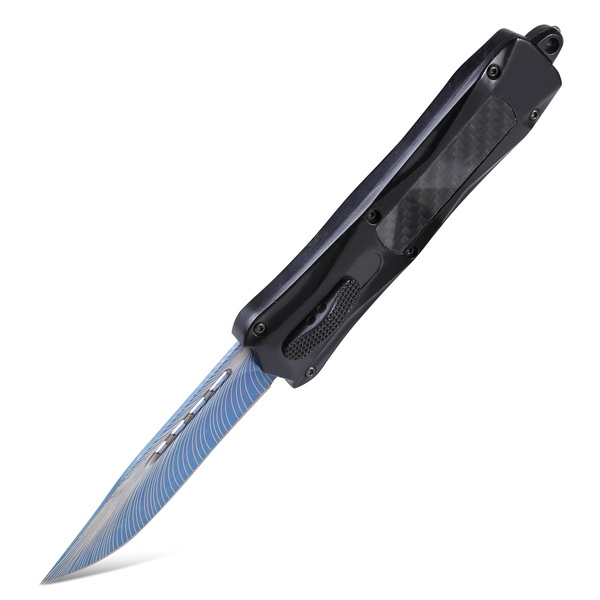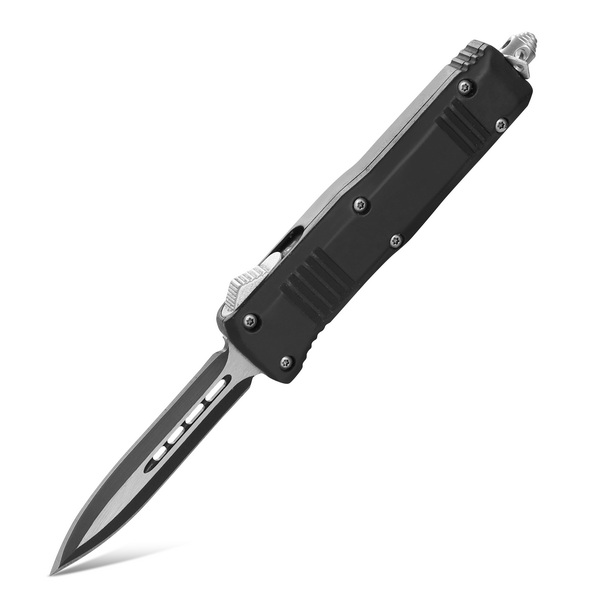Views: 222 Author: Leah Publish Time: 2025-10-29 Origin: Site











Content Menu
● The Ancient Craft: Japanese Knife Making Origins
● Historic and Modern Knife-Making Regions
>> Sakai City: Tradition and Division of Labor
>> Seki City: Innovation and Machine Precision
>> Echizen & Tsubame Sanjo: Artisan Independence
>> Tosa (Kochi): Forged Outdoor Tradition
>> Tokyo: Branding and Customization
● Leading Japanese Knives Manufacturers and Suppliers
>> Tojiro
>> Takeshi Saji
>> Misono
● The Knife-Making Process: A Craft of Many Hands
>> Forging
>> Handle Crafting and Assembling
>> Edge Sharpening and Polishing
● Materials and Innovations in Japanese Industrial Cutlery
● Japanese OEM Knife Services: Global Collaboration
>> Benefits of OEM Partnerships
● The Impact of Japanese Knives Worldwide
● FAQ
>> 1. What sets Japanese knives manufacturers and suppliers apart?
>> 2. Which regions dominate Japanese knife manufacturing?
>> 3. What kinds of knives do Japanese factories produce?
>> 4. How does an OEM partnership work with Japanese knife makers?
>> 5. What should buyers consider when choosing a Japanese knife supplier?
In the world of blades and cutlery, Japanese knives manufacturers and suppliers have carved a reputation synonymous with excellence, tradition, and innovation. From the bustling workshops of Sakai to the storied forges of Seki, Japan's knife industry blends a thousand years of swordsmithing heritage with the precision and demands of modern culinary and outdoor applications. These companies not only serve local and international chefs but also play a vital role in OEM manufacturing for global brands and wholesalers—offering bespoke products tailored to meet specific market requirements. This article provides an in-depth exploration of Japan's top knives manufacturers and suppliers, covering history, regions, technical processes, partnership opportunities, and more.[3][5][8]

Japanese knife making finds its earliest roots in the legendary sword-making cultures dating to the fifth century. Early blade craftsmen gathered in Sakai, a port city near Osaka, where forging expertise was vital for construction and trade. By the 14th century, Sakai had emerged as the capital of samurai swordsmithing, perfecting techniques that later transitioned into the art of knife-making. The introduction of tobacco by Portuguese traders in the 16th century sparked demand for specialized knives, and Sakai knife makers seized this opportunity, developing blades renowned for sharpness and durability.[4][5]
Over time, regional blacksmiths across Japan evolved their designs, responding to the varied needs of local cuisine and commerce. By the Meiji Restoration, as the samurai era waned, swordsmiths adapted their expertise to craft top-grade kitchen and outdoor knives—a tradition that has continued, with nearly 90% of professional chefs now favoring Japanese blades for their unique balance and cutting performance.[5][3]
Sakai, dubbed the “City of Knives,” accounts for a majority of domestic knife production. A key to its success is the rigorous division of labor, where each stage—blade forging, edge sharpening, and handle attaching—is handled by master craftsmen. This specialization ensures consistent quality and enables sophisticated products, such as honyaki single-edged blades (Deba, Yanagiba, Usuba), critical for Japanese chefs and culinary professionals.[4][5]
Seki in Gifu Prefecture has a storied tradition as a sword production center, now transformed into one of Japan's largest knife manufacturing hubs. Seki's manufacturers excel in combining time-honored blacksmithing methods with advanced machine processes for template forming and mass production. The region boasts brands such as Seki Kanetsugu and Masahiro, renowned for their layered steels and ergonomic designs.[8][10][11]
Located in Fukui and Niigata, the regions of Echizen and Tsubame Sanjo are famed for their artisanal, hand-forged knives. These areas nurture smaller blacksmiths who combine centuries-old techniques with fresh creativity, producing blades that feature innovative handles, Damascus patterns, and robust edge retention—highly valued by collectors and professional chefs alike.[11][12][8]
Tosa in Kochi Prefecture produces thick, rustic knives with a distinctive “black finish,” ideal for outdoor, agricultural, and survival uses. These blades are valued for their toughness and accessibility, providing an affordable entry point to traditional Japanese craftsmanship.[10][8]
While Tokyo itself is not a manufacturing center, companies such as Kiya and Tokyo Sugimoto serve as brand managers and suppliers, working with Sakai and Seki factories to offer high-end branded products and custom OEM batch production for international clients.[10]
Japanese knives manufacturers and suppliers each contribute unique strengths, styles, and technologies to the industry:
Based in Osaka, Sakai Takayuki is one of the premier names in both professional and home cutlery. The company produces an extensive range—from traditional honyaki blades to modern Damascus designs—with finishing steps that can exceed sixty per knife. Their use of super blue and cobalt steel ensures precision and longevity.[12][13]
Operating out of Seki, Kanetsugu specializes in contemporary VG10 Damascus knives and innovative grind geometries. Their “Hamaguri” edge combines sharpness with smooth, effortless slicing for culinary professionals.[10]
Tsubame Sanjo's Tojiro is acclaimed for its wide range, including warikomi composite steel knives that strike a balance between affordability and performance. Tojiro's international reach makes it a key partner for OEM and private-label collaborations, supplying both kitchen and outdoor knives.[10]
Master blacksmith Takeshi Saji in Echizen hand-forges Damascus blades of remarkable beauty and function, prioritizing artistic individuality while maintaining cutting reliability. Saji's knives are decorated with intricate layered patterns and exceptional steel selection.[10]
Misono offers lightweight, practical options prized for user-friendly molybdenum and Swedish steel. Its designs appeal both to home cooks and Michelin-star chefs, offering versatility and performance in every blade.[13][10]
- Masahiro, Zenpou (Seki): Mass production and custom designs for retailers and ODM clients, often using layered and Swedish steels.[11][10]
- Jikko (Sakai): Traditional artistry expressed through stunning blades and inspired design, often used by culinary competitions and top chefs.[12]
- GLOBAL, Minamoto (Niigata/Seki): Pioneers in stainless and modern materials, renowned for ergonomic, durable handles and sharp blades.[12][10]

Japanese knives manufacturers and suppliers offer a comprehensive range of blades:
- Deba: Thick, single-edged knives for butchering fish.[5]
- Yanagiba: Extra-long blade for slicing sashimi and sushi, favored in professional kitchens.[3][5]
- Usuba/Nakiri: Precision vegetable knives, with single or double edges depending on region.[3][4]
- Santoku: Versatile, multipurpose kitchen knife prized for all-around utility.[10]
- Gyuto: Japanese version of western chef knives, used for slicing meat, fish, and vegetables.[8][10]
- Damascus Series: Artistic, multi-layered steel blades for collectors, chefs, and enthusiasts.[10]
The process employed by knives manufacturers and suppliers in Japan is rigorous, often requiring multiple masters for each knife:[1][5][3]
Steel selection is crucial; most Japanese knives use high-carbon, stainless, or specialty alloys like VG10 and blue super steel. The raw steel is heated and hammered repeatedly, purging impurities and forming an edge. In the “kasumi” technique, soft iron is layered with hard steel, yielding flexibility and an exquisite visual pattern.[2][14][1][4][3]
Once forged, the blade is shaped—sometimes by template, sometimes by eye—then tempered and quenched. Quenching involves rapid cooling, which hardens the steel and locks in a keen edge. In honyaki knives, the spine is treated with clay, producing the iconic hamon line on the blade, separating the hard cutting edge from the softer spine for resilience.[1][2]
Handles are traditionally crafted from wood, buffalo horn, or synthetic resin. A dedicated craftsman fits the tang to the handle, ensuring robust connection and balance.[1][3]
Knives undergo precise sharpening using whetstones or mechanical grinders. Polishing can entail dozens of steps, especially for premium knives, culminating in a razor-sharp finish and immaculate blade appearance.[1][3]
The choice of steel and materials defines the performance of knives manufacturers and suppliers. Premium blades often employ:
- VG10 Damascus: Layered steel for superior sharpness and durability.[10]
- Blue Super Steel, Cobalt, R2/SG2: Exceptional edge retention for professional chefs.[8][10]
- Molybdenum, Swedish Steel: Lightweight, practical blades for high-volume use.[13]
- Ceramic: For rust-resistant everyday knives.[10]
Modern knives manufacturers and suppliers innovate with handle materials, blade geometries, and advanced forging techniques, marrying tradition with new client demands.
Japan's knives manufacturers and suppliers excel at OEM partnerships, customizing design, materials, branding, and packaging for overseas clients. OEM production supports wholesalers, retailers, and private brands by leveraging Japan's expertise, consistent quality control, and heritage reputation.[15][16]
- Customization: Create knives matching your brand vision and local needs.[15]
- Quality Assurance: Rigorous labor division and inspection at every stage.[16]
- Scalability and Reliability: Stable sourcing, predictable logistics, and premium components.[11][8][10]
International partners appreciate direct access to Japan's knife supply chain, collaborative refinement of products, and the opportunity to launch customized lines with authentic Japanese craftsmanship.
Japanese knives manufacturers and suppliers have expanded their global influence via exports, OEM solutions, and collaborations with chefs and brands worldwide. The infusion of expertise from legendary blacksmiths, and regional diversity, has inspired the evolution of culinary standards far beyond Japan. Knives produced by these suppliers not only equip kitchens but also symbolize a philosophy of continuous refinement, respect for material, and artistry that inspires generations.
Japan's tradition of knife-making is a living legacy—one that combines ancient swordsmith wisdom with modern engineering and artistry. The country's knives manufacturers and suppliers shape the global standard for premium cutlery, forging blades that unite history, innovation, and tailored solutions for every kitchen and outdoorsman. Whether purchasing for professional use, personal collection, or OEM collaboration, Japanese knives offer a compelling blend of heritage, technology, and beauty.

Japanese makers combine centuries-old swordsmithing practices, division of labor by specialized artisans, and constant material innovation to produce blades renowned for sharpness, durability, and artistry.[5][3][1][10]
Sakai (Osaka), Seki (Gifu), Tsubame Sanjo (Niigata), Echizen (Fukui), and Tosa (Kochi) are the primary centers for knives manufacturers and suppliers.[5][8]
Manufacturers offer kitchen knives (Deba, Yanagiba, Santoku, Gyuto, Usuba), outdoor knives, Damascus collector pieces, and ceramic rust-proof blades.[14][4][10]
OEM services allow brands and wholesalers to collaborate directly with knives manufacturers and suppliers, customizing design, materials, branding, and packaging to serve specific markets.[16][15]
Evaluate regional expertise, steel and handle materials, OEM capabilities, certification, reputation, and the supplier's track record with international partners when selecting among Japan's leading knives manufacturers and suppliers.[8][11][10]
[1](https://www.korin.com/about-history-of-japanese-knife-crafting)
[2](https://elementknife.com/blogs/history-of-knife-making/a-brief-history-of-japanese-kitchen-knife-making-from-swords-to-culinary-masterpieces)
[3](https://hasuseizo.com/blogs/japanese-kitchen-knives/japanese-kitchen-knives-design-and-materials)
[4](https://oishya.com/journal/knife-history-forging-methods/)
[5](https://dreamofjapan.com/blogs/japanese-knife-stories/everything-you-need-to-know-about-the-history-of-japanese-knives)
[6](https://www.teruyasu.net/whoweare/howto1.html)
[7](https://www.chuboknives.com/blogs/news/history-of-japanese-knife-crafting)
[8](https://global.ichimonji.co.jp/pages/knifemakingregions)
[9](https://www.youtube.com/watch?v=tbbky_RwFyc)
[10](https://miyukib.com/18-best-japanese-knife-manufactures-you-should-know/)
[11](https://japanese-knife-store.com/brands/makers.html)
[12](https://daonhatchinhhang-aw.com/blogs/english-version/top-10-famous-handcrafted-knife-brands-in-japan)
[13](https://www.chuboknives.com/pages/brands)
[14](https://sharpedgeshop.com/blogs/knives-101/the-japanese-knife-everything-you-need-to-know)
[15](https://keganico.com/oem-knife-manufacturer/)
[16](https://www.hamono.nl/en/knives/oem/)